What Is the Best Mattress for Back Pain
Sleep is a key time for the body to recover at the end of the day. Unfortunately, upper and lower back pain can negatively impact sleep quality. Using a mattress that does not provide adequate support can compound the issue and lead to new aches and pains in the morning. The best mattress is one that supports the spine and promotes even alignment can alleviate back pain and help ensure deeper, more restorative sleep.
The Sleep Foundation testing team has tested thousands of mattresses for different performance categories. These hands-on evaluations were conducted by a diverse group of testers with varying body types and preferred sleep positions in order to gauge how comfortable or uncomfortable each mattress feels for different people. With this list, the testers focused on mattress performance categories related to back pain such as pain/pressure relief, support, and ease of movement.
The mattresses below have earned the highest ratings for sleepers with back pain, and each one has received an accolade showcasing its strongest points. Scroll down for detailed information about each mattress, including how and where to buy them. We've also included a buyer's guide further below that covers why people experience back pain in bed, which types of mattresses are best for back pain, and how to pick out the right mattress based on its materials and construction.
Product Details
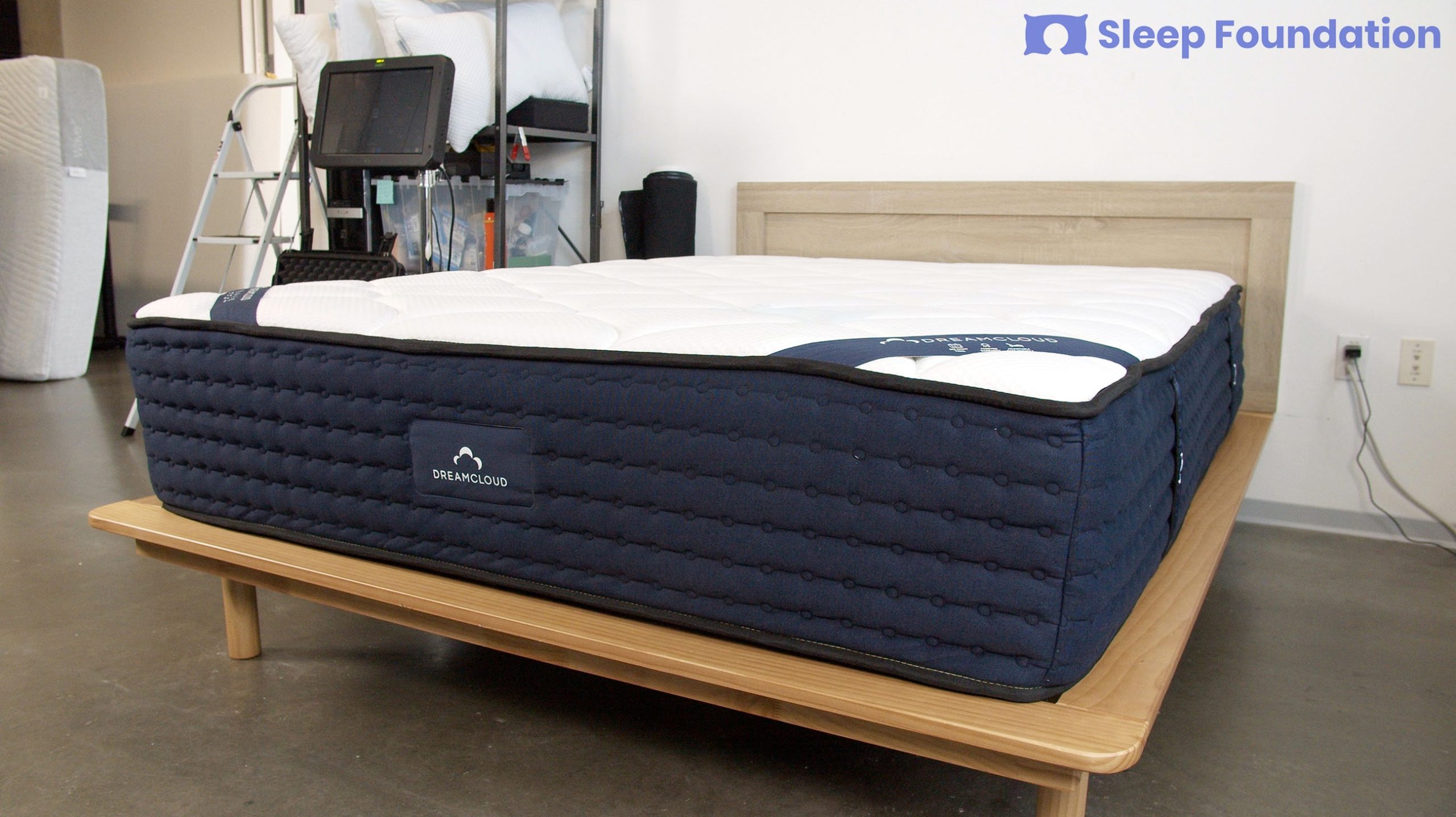
Best Overall
DreamCloud Mattress

Price Range: $1,198 - $1,798
Mattress Type: Hybrid
Firmness: Medium Firm (6)
Trial length: 365 nights (30-night requirement)
Warranty: Lifetime, limited
Sizes: Twin, Twin XL, Full, Queen, King, California King
Who it's best for:
- People with back pain
- Hot sleepers
- Heavy sleepers
- People of any sleeping position (back, side, stomach, combination
Highlights:
- Luxuriously thick profile
- Medium-firm balance of contouring and support
- Breathable cashmere-blend cover

SleepFoundation readers save $200 on a DreamCloud mattress + get $399 in free accessories
The DreamCloud Mattress is a luxury hybrid mattress with a plush quilted surface and a medium firm (6) feel. The DreamCloud combines pressure relief and great support to keep the sleeper's spine aligned and midsection supported, making it a great option for those with back pain.
What It's Made of
The quilted top of the DreamCloud consists of a foam fill with a breathable cashmere blend cover. Under this is a comfort layer of gel-infused memory foam, which doesn't trap as much body heat as conventional foams. Below this is a polyfoam transition layer followed by a support core of individually-wrapped coils.
How It Performed
The DreamCloud is distinguished by its thick profile, which allows it to have both substantial comfort layers and support core. Consequently, the DreamCloud is able to provide a significant amount of pressure relief while being capable of supporting most sleepers regardless of sleeping position or body weight. We also rated the bed well in motion isolation, temperature control, and ease of movement, making it a great all-around mattress.
Dreamcloud offers an excellent 365-night sleep trial and lifetime limited warranty, and for a luxury hybrid mattress, it comes at a relatively affordable price point.
Lab Notes – What Our Testers Thought
"The DreamCloud is quite firm compared to other pillow-top hybrids with thick profiles. As a side sleeper, I liked how the foam layers contoured closely, yet the mattress offered plenty of support around the midsection."
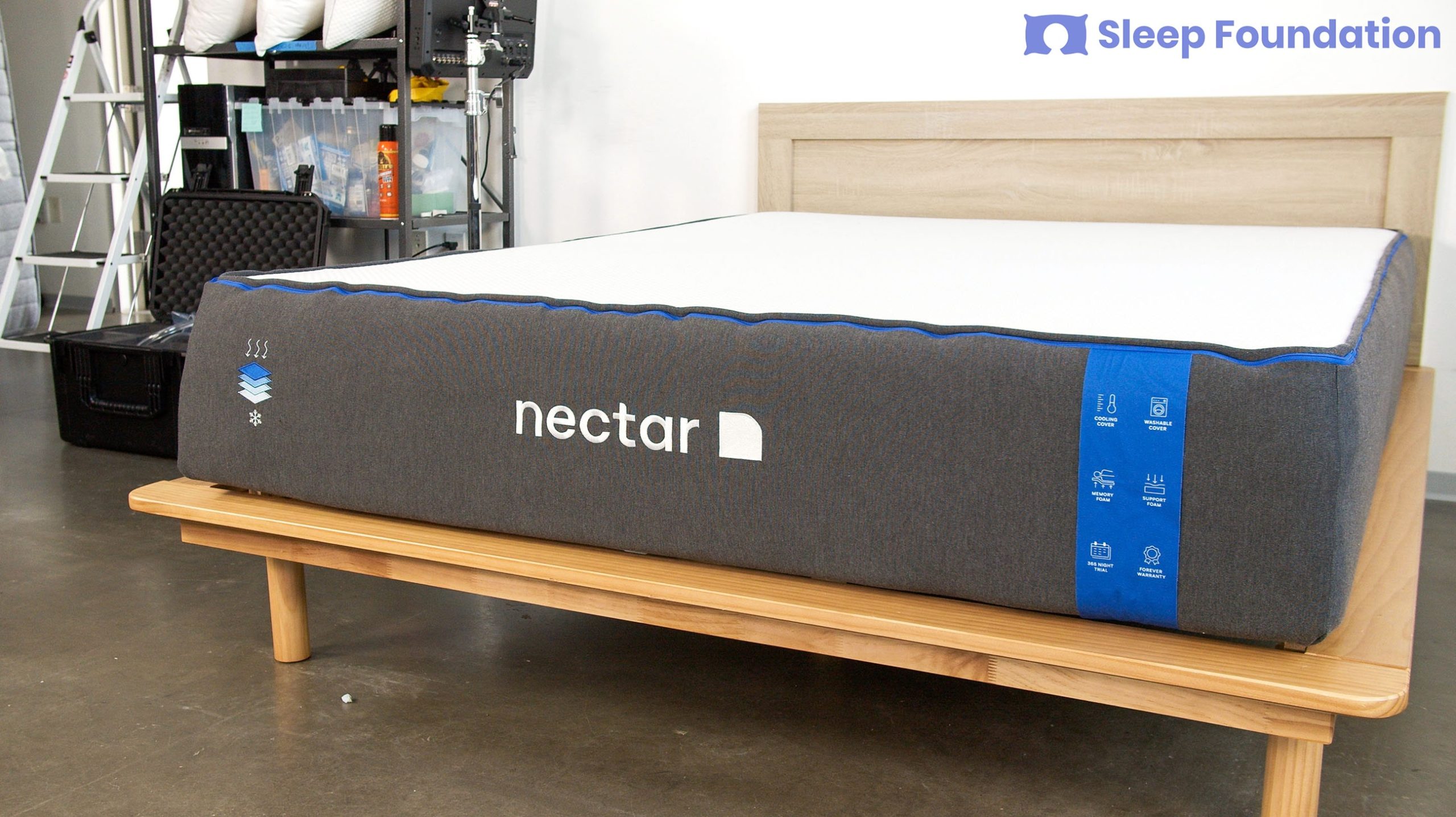
Best Value
Nectar Mattress
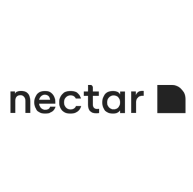
Price Range: $499 - $1,099
Mattress Type: Foam
Firmness: Medium Firm (6)
Trial length: 365 nights
Warranty: Lifetime, Limited
Sizes: Twin, Twin XL, Full, Queen, King, California King
Who it's best for:
- People who want the contouring of memory foam without too much sink or softness
- Side sleepers of average or above-average weight
- Back and stomach sleepers who weigh below 230 pounds
- Shoppers needing a wallet-friendly option without sacrificing quality
Highlights:
- Three layers of memory foam offer excellent contouring
- Medium Firm feel prevents sagging into the bed
- Budget-friendly price point

Get $399 worth of free accessories and a free Google Nest Hub with Sleep Sensing with every Nectar Premier purchase. Use checkout code: sleepfoundation
The Nectar Mattress is the quintessential all-foam mattress, with a medium firm (6) feel that should appeal to a wide range of sleepers. It also has a very approachable price-point compared to other foam beds with comparable construction.
What It's Made of
The top layer of memory foam is 1 inch thick and gel-infused to resist heat buildup. It is quilted into a Tencel cover that also promotes breathability. A second memory foam layer is 3 inches thick and made to be slightly firmer and more stable, avoiding the sag found with some memory foam beds. A third layer of memory foam is one-inch thick and gel-infused, adding up to a total of five inches of memory foam for noticeable pressure relief.
How It Performed
With a medium firm feel, the Nectar works well for side sleepers who weigh over 130 pounds as well as back and stomach sleepers who weigh under 230. The mattress can help relieve back pain thanks to its robust comfort system made up of three separate layers of memory foam. While this material compresses to hug the body, Nectar has constructed the foam to avoid concerns that can arise from memory foam being too soft or sleeping too hot.
Nectar has a generous 365-night sleep trial and a customer-friendly lifetime warranty. With a price point that is far below many other mattresses with memory foam comfort layers, it's a top pick for people with back pain who are shopping on a budget.
Lab Notes – What Our Testers Thought
"We think side sleepers with back pain are great candidates for the Nectar. It's a quintessential memory foam mattress that still manages to be firm and supportive enough to maintain an even surface for your body."
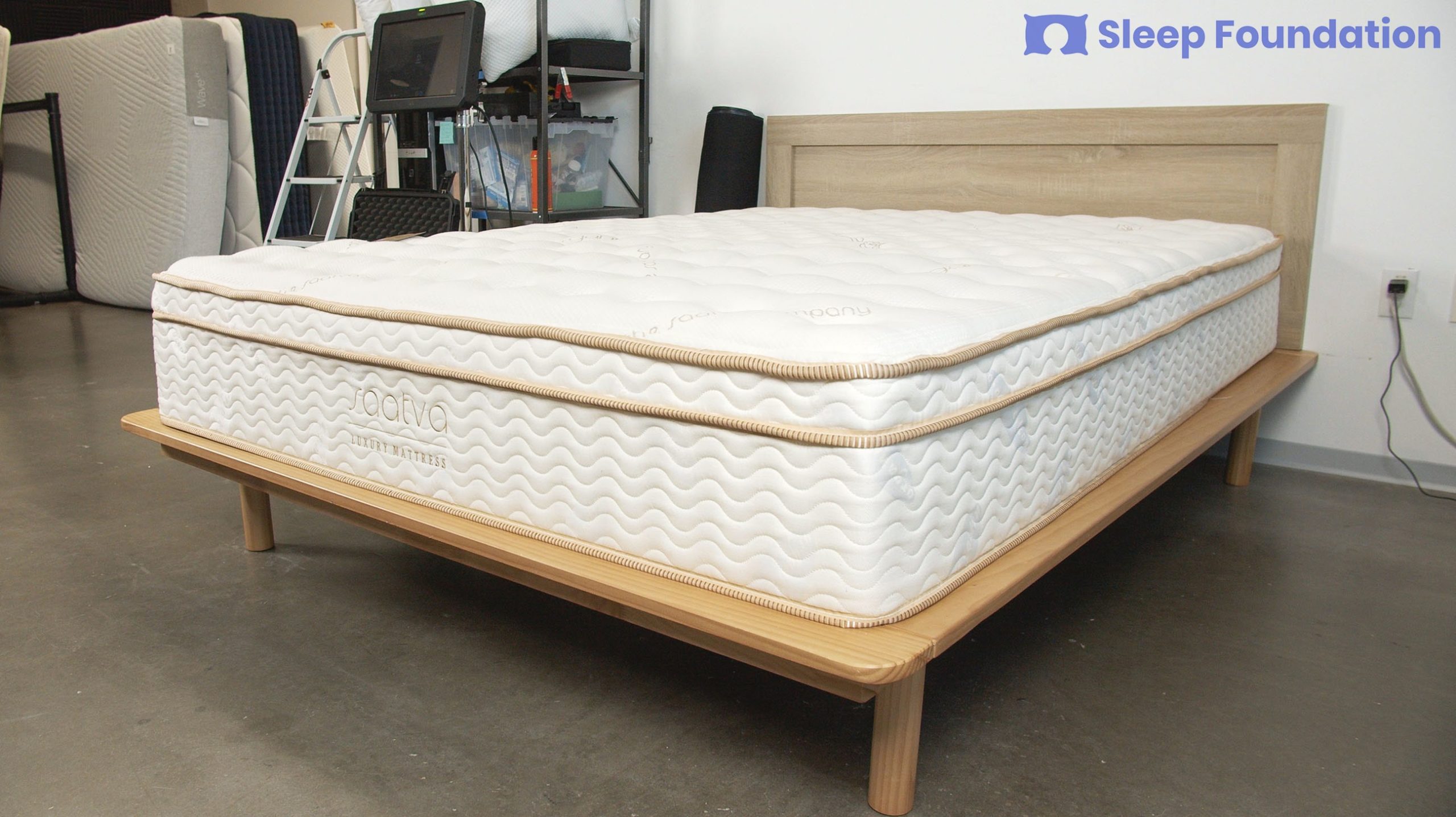
Best Luxury
Saatva Classic

Price Range: $887 - $2,276
Mattress Type: Innerspring
Firmness: Soft (3), Medium Firm (6), Firm (8)
Trial length: 180 Nights ($99 Return Fee)
Warranty: 15 Year, Limited
Sizes: Twin, Twin XL, Full, Queen, King, Split King, California King, Split California King
Who it's best for:
- Sleepers who want a durable mattress made of high-quality materials
- People who like the bounce of an innerspring but need extra support
- Anyone who wants a choice of firmness to suit their sleeping position
- Those who want hassle-free setup and removal of their old mattress
Highlights:
- Choice of two height profiles & three firmness levels
- Coil-on-Coil construction with extra pillow top support
- Free white-glove delivery

Pick your discount: $200 off mattress orders of $1,000 and above, or up to $290 off when you add a pair of pillows to your order
Saatva has established a strong reputation in the online mattress industry for their line of products made with thoughtful designs and quality materials. People struggling with back pain find the Saatva mattress to offer a compelling mix of contouring and springiness because of the double-layer of coils and a foam-filled pillow-top.
What It's Made of
The Saatva's support core is made with thick (13 gauge) Bonnell coils that have a perimeter of high-density foam. This combination forms a solid, stable foundation that works well for higher-weight sleepers and enhances overall edge support. To offer more conforming, the Saatva has a 4-inch layer of individually wrapped micro-coils. This layer allows the mattress to relieve pressure while upholding the stable feel of the support core. A Euro-top is stuffed with extra foam and a memory foam lumbar pad, a key feature for people with lower back pain.
How It Performed
Saatva offers this mattress in three firmness levels, so people in any position and body weight can find an option that will work for them. The firmer model should work better for stomach and back sleepers over 230 pounds, while the lighter model should work well for lighter side sleepers. The mattress resists excess heat buildup, especially with its breathable organic cotton cover. Customers can also choose between an 11.5" and 14.5" model.
White Glove delivery is included, which means Saatva installs the mattress in your bedroom and will haul-away your old mattress. Customers have 180 nights to test it out, but if you opt to return it, a $99 return shipping fee is deducted from the refund. A 15-year warranty provides protection against defects over the longer-term.
Lab Notes – What Our Testers Thought
"After testing the Saatva Classic, I felt most comfortable on the medium firm model. The nice thing about this mattress is that each firmness level is distinct, so most people with back pain will probably find an option that provides adequate relief."

Best for Side Sleepers
Helix Luxe Mattress

Price Range: $1,099 - $2,349
Mattress Type: Hybrid
Firmness: Soft (3), Medium Soft (4), Medium Firm (6), Firm (7), Firm (8)
Trial length: 100 nights (30-night requirement)
Warranty: 15 Year, Limited
Sizes: Twin, Twin XL, Full, Queen, King, California King
Who it's best for:
- Those who are unsure what firmness is best for them
- Sleepers of all sizes and sleeping positions
- Those who tend to sleep hot
Highlights:
- Deep comfort system for close, precise conforming
- Breathable Tencel cover and cushioning pillow top
- Pocketed coils offer airflow, bounce, and edge support

Get $200 OFF + 2 FREE Dream Pillows when you spend $1,750 or more. Use Code: SLEEPFOUND200
Helix Sleep offers an extensive line of budget-friendly and luxury hybrids designed to suit specific people based on their body type, sleep position, and firmness preferences.
What It's Made of
Like many competing hybrids, the Helix Midnight Luxe sleeps quite cool. A support core of pocketed coils generates steady air circulation to help the mattress maintain a comfortable core temperature, while the breathable Tencel cover wicks away moisture from your body. The zoned coil system also reinforces the perimeter and prevents deep sinkage when you sleep near the edges or get in and out of bed.
How It Performed
The Helix Midnight Luxe offers an excellent balance of contouring and support to alleviate upper and lower back pain. Side sleepers in particular should find the mattress comfortable thanks to its thick memory foam comfort layers, which cushion the shoulders and hips to align the spine and reduce pressure. If the mattress doesn't sound soft or firm enough for your liking, keep in mind that Helix's Luxe line includes five additional hybrid models with different feels and target audiences.
The Midnight Luxe is priced competitively, but Helix Sleep provides free shipping to all 50 states and backs the mattress with a 15-year warranty. You'll also receive a 100-night sleep trial with your purchase.
Lab Notes – What Our Testers Thought
"I found the Midnight Luxe's balanced construction to be one of its greatest assets. The pillow-top surface delivers plenty of cushioning for people with back pain, while the underlying support layers prevent people from sinking too much."
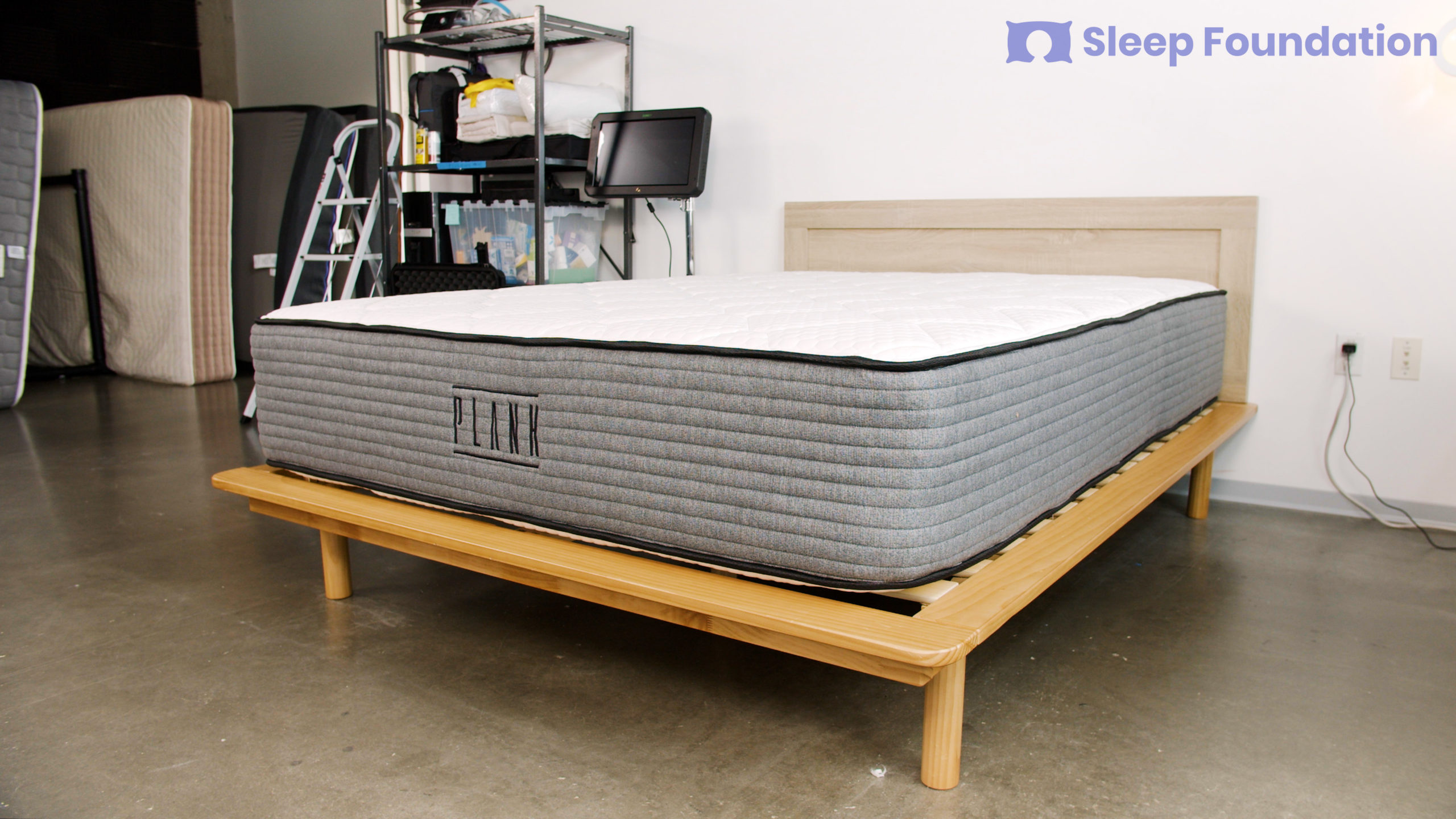
Best Firm
Plank Luxe Hybrid
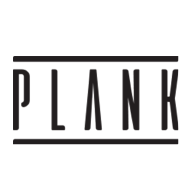
Price Range: $799 - $1,499
Mattress Type: Hybrid
Firmness: Firm (7), Extra Firm (9)
Trial length: 120 nights (30-night requirement)
Warranty: 10 Year, Limited
Sizes: Twin, Twin XL, Full, Queen, Short Queen, Olympic Queen, King, Short King, RV King, California King, Split California King
Who it's best for:
- People who weigh more than 230 pounds
- Hot sleepers
- Value seekers
Highlights:
- Flippable design features firm and extra-firm surfaces
- Optional phase change panel provides exceptional cooling
- Excellent edge support

Use this SleepFoundation.org link for the most current discount on Brooklyn Bedding mattresses
The Plank Luxe Hybrid from Brooklyn Bedding is a great option for sleepers who struggle to find mattresses that feel firm and supportive enough. This reversible model has a different feel on each side. One surface is firm (7) and the other is extra-firm (9), so sleepers can expect above-average support no matter which side they use.
What It's Made of
The Plank Luxe Hybrid's firm side begins with a 1.5-inch layer of adaptive foam quilted into the cover that adds plushness to the surface. A comfort layer of proprietary TitanFlex foam combines the contouring of memory foam with the responsiveness of latex, resulting in a good balance of cushioning and support. This side also includes a transitional layer of high-density polyfoam. The extra-firm side has a thinner layer of foam quilted into the cover and does not include the TitanFlex comfort layer, so this surface feels noticeably firmer by comparison.
A shared support core of pocketed coils is located between the foam layers of each side. This layer stabilizes the mattress and reinforces the perimeter to minimize sinkage when you sleep near the edges or get in and out of bed. Regardless of which side you use, the opposite surface provides base support.
Customers have the option of adding panels of phase change material to each side of the mattress. These panels, which are engineered to absorb and dissipate body heat, will increase the cost of your order by $100 to $200 depending on which mattress size you choose.
How It Performed
The Plank Luxe Hybrid excels in performance areas where softer mattresses often fall short. Perimeter support is a major strength – our testers noticed very little sinkage along the edges when lying on the firm side and no sinkage whatsoever on the extra-firm side. Ease of movement across the surface is another area where the mattress performs quite well. Most sleepers should experience minimal sinkage when getting in and out of bed regardless of their body weight.
The Plank Luxe Hybrid's coil layer promotes airflow to cool off the interior and help the mattress maintain a comfortable temperature. Those who want additional cooling should opt for the phase change panel.
Compared to other hybrid models, the Plank Luxe Hybrid has an affordable sticker price. Brooklyn Bedding also provides free ground shipping throughout the contiguous U.S. Each order is backed by a sleep trial that spans 120 nights, and customers who decide to keep the mattress also receive a 10-year manufacturer's warranty.
Lab Notes – What Our Testers Thought
"Our testers who weigh more than 230 pounds were quite satisfied with the extra-firm side of the Plank Luxe Hybrid. The firm side should be more suitable for people who weigh less and want some contouring, but still need extra support."

Best Pressure Relief
GhostBed Classic
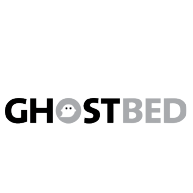
Price Range: $845 - $1,990
Mattress Type: Foam
Firmness: Medium Firm (6)
Trial length: 101 Nights (30-Night Requirement)
Warranty: 20 Year, Limited
Sizes: Twin, Twin XL, Full, Queen, King, California King, Split King
Who it's best for:
- Side and back sleepers
- People who overheat in bed
- Those who experience back pain but don't like the "body hug" of memory foam
Highlights:
- Latex-foam construction provides a balance of contouring and responsiveness
- Breathable components help sleepers stay cool
- 101-night sleep trial and 20-year warranty

SleepFoundation.org readers get 30% off mattresses & 2 free luxury pillows ($190 Value) or 40% off the adjustable bundle. No code necessary.
The GhostBed Classic is a solid option for sleepers with back pain who dislike the close hug and slow response of all-foam mattresses. The bed carefully balances support and pressure relief to promote healthy sleep posture.
What It's Made of
The comfort layer of this mattress is composed of latex, which provides cushioning and contouring to alleviate pressure along the spine but won't hug the body as closely as memory foam. A transitional layer of gel-infused memory foam offers some additional conforming, but the latex layer keeps the mattress responsive and prevents deep sinkage for most people who weigh 230 pounds or less.
How It Performed
The latex is ventilated to promote airflow near the surface, which reduces heat retention and helps sleepers stay cool. Another temperature-regulating component is the cover, which is made from a breathable blend of viscose and polyester. Those who tend to feel too hot on all-foam beds should find the GhostBed Classic more comfortable by comparison. Although the latex has some bounce, the mattress also isolates motion fairly well. This can benefit anyone who tends to wake up when their sleep partner changes positions or moves around in bed.
The GhostBed Classic is affordably priced and all purchases include two GhostPillows at no extra charge. Ground delivery is also free for customers in the contiguous U.S. Each order comes with a 101-night sleep trial and 20-year manufacturer's warranty.
Lab Notes – What Our Testers Thought
"The GhostBed's latex layer gives the mattress a very distinct feel compared to the foam models we've tested. This mattress should be comfortable for anyone who sinks into memory foam too much."
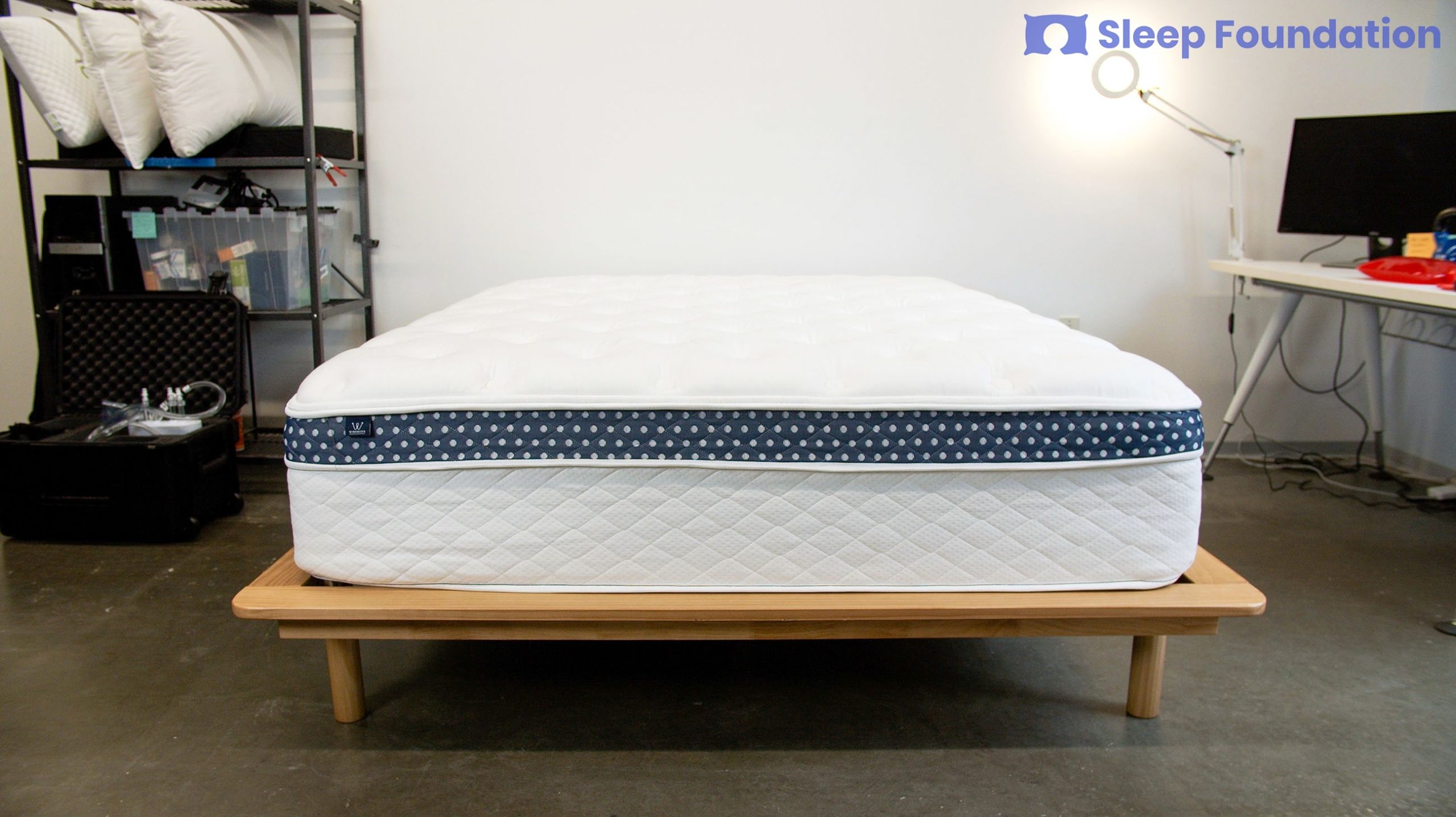

Price Range: $1,149 - $2,049
Mattress Type: Innerspring
Firmness: Medium Soft (4), Medium Firm (6), Firm (7), Firm (8)
Trial length: 120 nights (30 night requirement)
Warranty: Lifetime, Limited
Sizes: Twin, Twin XL, Full, Queen, King, California King
Who it's best for:
- Sleepers who value robust edge support
- People who want a choice of firmness options
- Sleepers in any position who want moderate contouring with bounce
Highlights:
- Standout edge support
- Coil-on-Coil design
- Zoned pocketed coils in support core
- Foam pillow top for added cushioning

Get $300 off all beds + $399 in bedding accessories (a $699 total value)
The WinkBed is an impressive hybrid mattress that serves the needs of back pain sufferers thanks to its coil-on-coil design supplemented by gel-infused polyfoam in its Euro-top.
What It's Made of
The support core of the WinkBed is made up of pocketed coils that are arranged in zones to deliver extra support to the heavier parts of the body. Reinforcements around the perimeter give the WinkBed a standout level of edge support that keeps you stable when sleeping or sitting near the edge. Above this core is a thinner layer of coils that are also individually wrapped to tailor their compression to the body's weight.
How It Performed
The combination of both sets of coils allows the mattress to cushion pressure points to help with spinal alignment without sacrificing bounce or permitting excessive sink. Added contouring from polyfoam in the Euro-top gives an extra touch of support that's needed for people with back problems. The WinkBed is available in three firmness options (medium soft, medium firm, and firm) plus a separate model, the WinkBed Plus, built for people of above-average body weight. This range of options caters to people in all sleeping positions. Motion isolation and temperature regulation are both above-average.
WinkBeds backs this mattress with a 120-night sleep trial and a lifetime warranty.
Lab Notes – What Our Testers Thought
"The microcoil transition layer coupled with the zoned pocketed coils provides the right balance of cushioning for the spine and support for the midsection. This is another mattress that should appeal to a wide swath of people thanks to its different firmness options."

Best for Back Sleepers
Level Sleep Mattress
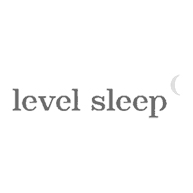
Price Range: $799 - $1399
Mattress Type: Foam
Firmness: Soft (3), Medium (5), Firm (7)
Trial length: 365 nights
Warranty: Lifetime, Limited
Sizes: Twin, Twin XL, Full, Queen, King, California King
Who it's best for:
- Side and back sleepers
- Couples
- People who experience sharp pains or pressure points along their spines
Highlights:
- Zoned transitional layer provides targeted bodily support
- Great motion isolation for couples
- 365-night sleep trial

Take 20% off any order over $100. Use Code: SF20
The Level Sleep Mattress boasts a zoned design that reduces pain and pressure very well for side and back sleepers. With three firmness levels to choose from, this bed caters to a wide array of sleepers.
What It's Made of
The top layer of the mattress is composed of adaptive polyfoam that contours to the body. Beneath this lies a transitional layer divided into three zones based on firmness. Softer foam cushions the head, shoulders, and legs while firmer foam reinforces the torso and hips, where people tend to carry the most weight. This design ensures people receive adequate contouring and pressure relief without sinking too much.
How It Performed
The Level Sleep Mattress is very well suited to couples. The foam layers absorb movement and prevent this motion from transferring across the surface – a common source of disruptions for sleep partners – and the mattress is completely silent and creak-free. For an all-foam model, the mattress also provides above-average temperature regulation and won't sleep hot for most folks.
The mattress is reasonably priced given its innovative, high-quality construction. Customers in the contiguous U.S. also qualify for free ground shipping. You'll receive a sleep trial order that allows you to test out the mattress for an entire year before making a decision, along with a lifetime warranty for extra peace of mind.
Lab Notes – What Our Testers Thought
"This feels like a mattress made to relieve back pain. Nice and plush on the surface, but that zoned middle layer gives the Level a very supportive feel from head to toe.
Why You Should Trust Us
At Sleep Foundation, we understand the importance of choosing the right mattress – especially when it comes to back pain. That's why we've personally tested hundreds of mattress models to bring you the top picks listed above. Our expert team includes product testers that cover a wide range of body types, sleep positions, and comfort preferences. After thorough hands-on testing, we consider these selections to be the best of the bunch.
To evaluate mattresses for back pain relief, we ask our testers to lie down on each mattress. Ideally, a mattress should contour to the body while maintaining even support, so we'll measure how deeply the mattress sinks beneath the tester's weight. We also use body-mapping sensors to pinpoint locations where painful pressure points are likely to occur. Although we relied on feedback from all of our testers, we focused on those who have a history of upper and/or lower back pain.
How Back Pain Affects Sleep
Back pain is a widespread problem that affects an estimated 80% of adults at one time or another. It can make all types of daily activities difficult including walking, working, sitting, and lifting even lightweight items. Unfortunately, back pain complicates sleep as well, making it hard to find a comfortable position to fall asleep and keep sleeping soundly through the night.
Research studies have found that over half of people with lower back pain report sleeping problems. These negative impacts on sleep arise in people who have both sudden and short-term (acute) back pain and those who have long-term, persistent (chronic) back pain.
People with pain tend to have fragmented sleep that occurs from waking up during the night. Upon waking up, getting back to sleep can be difficult because of ongoing aches and discomfort. Pain can also contribute to stress, depression, and anxiety, all of which can be detrimental to quality sleep.
Back pain sufferers can take a number of steps to try to feel and sleep better. Getting medical help for serious back problems may help reduce pain. Treatments depend on the cause and nature of a person's symptoms and can range from surgery to physical therapy to pain-relieving medications.
Smaller changes can contribute to pain reduction as well. Taking care when lifting, sitting with proper posture, and avoiding unnatural movements can reduce aggravation of back pain. Having a mattress that keeps the body aligned can reduce stress on the spine and facilitate better sleep.
Types of Back Pain
Back pain can present in many different ways and for a wide variety of reasons. To help classify back pain, it is normally described as either acute or chronic.
Acute back pain comes on rapidly and is often a sharp, intense pain. In many cases, acute back pain is directly tied to a specific event such as a fall, an awkward twist of the body, or lifting a heavy object. It is pain that normally comes from injury to muscles and/or ligaments.
Chronic back pain lasts for three months or longer and persists despite attempts to remedy it. It can involve sharp pain but may occur as stiffness or a dull soreness. Sometimes it can be connected to a prior injury, but often has no clear or immediate cause.
Another way to distinguish between types of back pain is based upon which part of the back is affected.
-
Lower back pain
Lower back pain is by far the most common type of back pain. It affects the lumbar region, which includes the lowest five vertebrae (L1-L5) of the spine. Pain in this area is the second most common reason — after only cold- and flu-like symptoms — why people visit their doctor.
Lower back pain can be tied to basic muscle strain as well as to more complicated issues affecting the nerves, organs, and vertebrae. Examples of possible causes include compression fractures, ruptured or herniated disks, and narrowing of the spine (spinal stenosis).
The lower back has more curvature and range of motion than other parts of the back, and this makes it more susceptible to injury related to movement and posture, including positioning during sleep. If a mattress offers insufficient support, the lower back may twist or bend in an unnatural way. For example, if the bed is too soft or is worn out, the hips, which carry more weight, may sink deeply into the mattress and out of alignment with the lumbar area. When that or any other misaligned position is held for an extended period during the night, it can be a direct contributor to back pain.
-
Mid back pain
Middle back pain is much less common than lower back pain. The middle back is generally identified as above the lumbar spine but below the rib cage. The anatomy in this area is designed to promote stability over flexibility, reducing the propensity for movement-based injury compared to the lower back.
Even though mid-back pain is less common, it can still occur as a result of numerous conditions. Nerve compression, damage to discs, fractures, and muscle or ligament injury can occur in this region. Middle back pain can also be caused by serious underlying problems, like tumors or organ problems, making it important to get it reviewed by a doctor, especially if it occurs alongside other unexplained symptoms.
Stiffness and aching in the mid-back can arise because of poor posture and lack of spinal support. Because of the amount of time spent in the lying position during sleep, these alignment issues can often be connected to a mattress that does not adequately support the body and cushion a person's pressure points.
-
Upper back pain
Upper back pain is less common than lower back pain but occurs more frequently than middle back pain. It affects the thoracic region, which runs from the bottom of the rib cage up to the lower neck and involves the 12 vertebrae that connect to the ribs. As with middle back pain, the reduced flexibility of bones and muscles in this region make movement-based strains less common than in the lower back.
Upper back pain can occur for similar reasons as the mid-back — nerve, disc, muscle, ligament, or vertebrae problems — but there is a greater likelihood that this pain is connected to a potentially serious health issue. Pain in the upper back and shoulders can also come about because of awkward or unsupportive body positioning. If a pillow is not the right height or if a mattress doesn't properly accommodate the shoulders, it may place undue pressure on the anatomy of the thoracic region, heightening the risk of upper back pain.
-
Neck pain
Neck pain can occur due to different reasons. Many people develop strains and sore spots due to less-than-optimal posture, which can be especially problematic for people who sit at a desk for their jobs. As with back pain, issues with your vertebrae – such as disc issues – can also lead to neck pain. Another important consideration is the pillow you use. In order to reduce aches and pains, a pillow should provide enough support and loft to keep your neck aligned with the spine and hips. Other factors at play include age, physical activity level, and previous injuries with lingering effects.
Regardless of whether back pain has started suddenly or has been a long-term issue, people experiencing it should make sure to get checked out by a doctor. Not only can a physician help try to relieve pain, they can conduct a full diagnostic process to determine if back pain is being caused by a more serious underlying health issue.
Can Sleeping Position Affect Back Pain?
Sleeping position can have a direct effect on back pain. Each sleeping position creates a unique set of pressure points and areas that need cushioning, and this is why having the right mattress to suit your sleeping position is an important part of preventing and reducing back pain.
Back sleepers tend to have their most serious pressure points around the lumbar area. If a mattress is too soft, the weight of the abdomen will cause this region to sink out of alignment with the rest of the back and hips. If the mattress is too hard, it won't accommodate the natural curvature of the spine in the lumbar area. For this reason, a Medium-Firm to Firm mattress usually works best for back sleepers.
Side sleepers have high-impact areas where the body is the widest, notably at the shoulders and hips. A mattress needs to be contouring enough to cushion those pressure points but not so soft as to let them sink too deeply into the bed and out of line with the rest of the body. Most side sleepers get the best results from a Medium to Medium-Firm mattress.
Stomach sleepers have pronounced pressure points in the lumbar area and around the neck. If their pillow is too tall, it can put excess bend in the neck and upper back. If the mattress is soft, the pelvic area can dip too far, putting the body in a U shape that stresses the spine as well as the muscles and ligaments in the lower back. As a result, stomach sleepers tend to have less back pain if they use a thin pillow and have a Firm mattress.
Body weight is an important factor to consider along with sleeping position. People who weigh more will sink further into a mattress, exacerbating the risks in all sleeping positions of the heavier parts of the body becoming misaligned. Sleepers of above-average body weight (over 230 pounds) typically need a firmer mattress than someone of average weight who sleeps in the same position.
Similarly, people who weigh under 130 pounds are less prone to sinking into the bed, and can sleep on a softer, more contouring mattress without the same risks of the body sagging out of alignment. In fact, to get the support that they need, lighter-weight sleepers generally need a softer mattress than an average-weight sleeper in the same sleeping position.
Can a Mattress Cause Back Pain?
A mattress can definitely be a cause of back pain because it plays such an important role in how the body is positioned through the night. Most people know that posture is important but only think about their posture in the context of standing and sitting. This can cause them to overlook the importance of having a mattress that is the proper fit for them based on their body shape, weight, and sleeping position.
If the spine and joints aren't aligned and well-cushioned during sleep, they won't be able to relax. Instead of recovering, the body will be strained, exacerbating pre-existing back issues and sowing the seeds for new ones. The easiest way to know whether a mattress is a contributing factor to back pain is if the pain tends to be the most pronounced in the morning when you wake up. If the pain is the worst when you get out of bed and subsides during the day, there's a good chance that your mattress is playing a part in your aches and pains.
Which Type of Mattress is Best for Back Pain?
A key step in choosing a mattress is deciding which mattress type is most likely to work for you. Virtually all mattresses on the market today can be broken into five types based on their construction and materials.
Within each category, you can find consistent features; however, there can be notable variation from one brand or model to the next. Some types allow for a greater diversity of designs, which leads to a wider variation in the expected feel and performance of any specific mattress.
Hybrid
Definition: Hybrids are constructed with an innerspring support core that is supplemented by a significant comfort system that may include layers of foam, latex, micro-coils, cotton or fiber fill, down, and/or wool. The comfort layers on a hybrid are much more robust than on an innerspring mattress.
Highlight: Balanced Features. Hybrids try to capture the best of multiple bed types without suffering from their downsides. For example, hybrids tend to offer moderate to significant contouring that aids in pressure point relief, while their coils permit excellent ventilation, making temperature regulation a plus on most hybrid beds.
Innerspring
Definition: An innerspring mattress is composed almost entirely of metal coils. There may be a thin layer of cotton, polyester, or foam above the coils, but this layer does not significantly change the mattress performance. Historically, innersprings were the most common mattresses, but their popularity has declined considerably as foam, latex, and hybrid models have gained steam.
Highlight: Inexpensive and Customizable. A benefit to innersprings is that they are among the most inexpensive options that you can find. You can use the extra money saved to customize the feel to suit your needs with a mattress topper.
Latex
Definition: In latex mattresses have an interior construction made completely with latex, which is a type of rubber. Most mattresses use natural latex from trees, but synthetic or blended latex is used occasionally. The comfort layers and support core may employ different types of formulations of latex.
Highlight: Supportive Contouring. Latex has moderate contouring effects, allowing it to cushion the body without an excessive amount of sink.
Airbed
Definition: Airbeds feature a support core of inflatable chambers. Sleepers can use a remote or smartphone app to control a pump that can add or remove air from the chambers, adjusting firmness in real time. There may be other materials, including foam, latex, cotton, polyester, or wool, layered as a comfort system above the support core.
Highlight: Adjustable Firmness. The primary benefit of airbeds is their adjustability. Being able to quickly modify the firmness of the bed can be a huge plus for people with back pain because it lets them get "dialed in" depending on the nature of their pain and posture at that exact point in time.
Foam
Definition: Foam is layered to create both the support core and comfort system of an all-foam mattress. Memory foam is a popular material in foam mattresses as is polyurethane foam (polyfoam), which can be manufactured to have a range of distinct characteristics. Latex may be included among the layers, but no coils are used in a foam mattress.
Highlight: Deep Contouring. Memory foam tends to offer the highest degree of hug. This allows these mattresses to deliver proportional cushioning to the areas of the body that need it most, which can be especially useful for side sleepers who have sharp impact points.
How to Get Relief on a Budget
When you're struggling with back pain, you may feel like you're willing to give anything to get relief, but the realities of your budget can mean that you have to think about the impact of any mattress purchase on your bottom line. The good news is that there are multiple wallet-friendly ways to improve your bed, enhance your sleep, and give your back a rest.
Consider Buying a Mattress Online
A great way to score a deal on a new mattress is to buy online. While it might seem like a strange concept if you're used to going to a brick-and-mortar store, the truth is that buying online offers some huge advantages.
Most online mattresses are sold directly by the manufacturer. Eliminating the middle-man and the need for showroom space means lower prices, and the growing competition between retail and online storefronts has only generated more deals for shoppers.
But the benefits go beyond just price. Shopping online is convenient, allowing you to browse options from the comfort of your own home and without any salespeople eagerly pushing a sale to earn a commission. Having the time to research each mattress and compare it to others is a major contrast to the brick-and-mortar experience where you're limited to just what's available in that store.
When buying online you don't have the ability to feel out a mattress before purchasing, but almost all online retailers provide a sleep trial with no-hassle returns, offering you a full refund if you try out the mattress and don't like it. This gives you a no-risk opportunity to try out a mattress for weeks or months in your own bedroom as opposed to for just a few minutes in a store. Over the longer-term, virtually all online mattresses come with a warranty of at least 10 years to protect against future problems, which are rare in mattresses sold both online and in-store.
Shipping is usually free within the contiguous U.S. with the mattress being delivered as a "mattress-in-a-box." To do this, the mattress is compressed and sealed in plastic. When you remove it from its packaging, it regains its full size within a matter of hours. This serves as a convenient way of getting the mattress set up in your bedroom without having to coordinate with a delivery team.
Online mattresses come in a wide range of styles and price points, allowing every customer to find the right fit for their preferences and budget. These mattresses are typically reliable and made with the same quality of materials as mattresses sold in stores. Many of the big, well-known mattress brands have even come into the fold and launched products to be sold online.
Another benefit is that customers have a wealth of useful resources to help guide their decision. In the past, getting details about the performance of mattresses sold in retail stores was a challenge. Online, though, there are helpful sites, including ours, offering reviews and detailed explanations of what you can expect from any specific brand or model. Many sites also have coupons to help you get the best price.
While it can seem like a leap to buy a mattress online for the first time, thousands of customers have already been won over to this exciting approach to finding a high-quality mattress at a great price.
Mattress Toppers
A mattress topper provides another way to change up the feel of your bed without breaking the bank. Instead of replacing your whole mattress, a topper lets you place a fresh layer above your existing mattress.
Most mattress toppers are 1 to 3 inches tall and can be made of memory foam, polyfoam, latex, cotton, polyester, down, or a mix of materials. Memory foam is one of the most popular types of toppers, providing an opportunity to try out this material without committing to a completely new bed.
A major benefit of a topper is that you can take advantage of a new comfort system that fits your needs. This may include a change in the firmness and/or the contouring to cushion your pressure points. For people with back pain, the difference can be notable and serve as a meaningful step toward better sleep.
At the same time, it's important to remember that any topper comes with potential downsides. Every material has pros and cons, and those will be reflected in a topper. Most sleepers above 130 pounds need a topper that is at least two inches thick, and higher-quality versions can cost a few hundred dollars.
Toppers also won't offer the same level of overall performance as a full mattress. Remember that a mattress is built with multiple layers designed to work together. With a topper, that element of coordinated design doesn't apply, so they may not capture the full benefit of the material (like memory foam).
A topper may wear out over a shorter period of time, especially if it's thinner, made with lower quality materials, or if you weigh over 230 pounds.
Last, a topper can't make a deteriorating mattress feel "like new." If your existing mattress is already sagging, a topper will end up sagging, too. For this reason, a topper is the best bet when you need to adjust the feel or support of your existing mattress, not when your existing mattress has started to give out.
Try Changing Up Your Sleeping Position
Changing your sleeping position is one way to try to get back pain relief.
If you are a back or stomach sleeper with a soft mattress and you don't have the budget for a new bed, you can try to switch to a side sleeping position that will receive more support from your existing mattress. In general, experts recommend that stomach sleepers try to adjust to side or back sleeping because it's easier to get appropriate support in those positions.
For people with acute pain, temporary changes to your sleeping position may help to reduce stress on already sore or achy parts of your back. For example, people with lumbar pain might try a period of side sleeping to avoid the excess bending of that area that can happen on your stomach or back.
While changing sleeping positions is worth a shot, it's often not a long-term solution because the change can be hard to stick with. Some people just can't get comfortable in a different position or they may quickly revert back to their old sleeping position during the night. In these cases, other approaches are more likely to be beneficial over the medium- to long-term.
Additional Sleeping Accessories for Sleepers With Back Pain
Besides a mattress, other accessories can play a part in making your bed conducive to quality, pain-free sleep. Upgrading your pillows and your bed base can be done as a lower-cost way of improving your sleeping surface, or you can purchase these along with a new mattress as part of a complete overhaul.
Pillows
Pillows play an important role in preventing and reducing back and neck pain. Pillows that provide proper support to the neck can improve spinal alignment because the spine extends into the neck (known as the cervical spine). In addition to supporting the head, pillows can be strategically placed to provide cushioning and comfort to other parts of the body.
Numerous factors affect which pillow can best help any individual fight neck and back pain. The amount of loft of your pillow should fit your personal preference and body shape. The right loft level is also largely determined by the firmness of your mattress and your sleeping position, as outlined in the following tables.
| Sleeping Position | Pillow Loft Recommended |
|---|---|
| Back | Medium |
| Side | Medium or High |
| Stomach | Low |
| Mattress Firmness | Pillow Loft Recommended |
|---|---|
| Soft – Medium Soft | Low |
| Medium | Medium |
| Medium Firm – Firm | High |
To reduce back pain, pillows can be used to support other parts of the body besides just the head and neck.
- Side sleepers may find it helpful to put a pillow between their knees, especially if they draw their legs up toward their chest. Using a pillow in this way can reduce pressure on the hips and lumbar area. A full-length body pillow can be used to prevent twisting through the lower back.
- Back sleepers can benefit from a low-to-medium loft pillow placed beneath the knees, which can aid in maintaining a more natural bend in the lower back.
- Stomach sleepers may get pain relief by placing a thin pillow below the pelvis to hedge against excess pressure or sinking of the lumbar area. Some stomach sleepers use no pillow at all for their head or may rest only their forehead on a very thin pillow.
Bed Platforms and Bases
The base of the bed can contribute to a supportive overall sleeping surface for people with back pain.
Some people opt for an adjustable bed, which allows for the upper and lower body to be raised at various angles. Many adjustable bed frames also include a heat or massage feature that can be a nice bonus for back pain sufferers.
The optimal position for any sleeper on an adjustable base will depend on the type of back pain that they have and their sleeping position. Back sleepers, for example, frequently find that a slight elevation of the torso and legs helps take pressure off of the lower back. It is essential to ensure that your mattress is compatible with an adjustable bed before purchasing and setting one up.
Even customers who don't want an adjustable bed should take care in choosing the foundation, platform, or base for their mattress. Most manufacturers list recommended characteristics of the base, including distance between any slats of a bed frame. Following these guidelines keeps the mattress in good condition and avoids premature sagging. Using an approved base may be necessary to maintain the validity of the mattress warranty as well.
Mattress Features To Look For to Relieve Back Pain
When shopping for a mattress to help relieve back pain, some features are more important than others. With so many products and a bevy of marketing hype, it can be tough to parse out what really matters. You're most likely to get the most satisfaction out of your purchase by focusing on certain key considerations:
- Mattress Type: the materials and design will play a huge role in the performance of a mattress. The contouring, bounce, firmness, temperature regulation, and motion isolation of a mattress will be different for each mattress type, so it is critical for shoppers to think about their priorities and choose a mattress with components that will best meet their needs.
- Zoned Support: weight from the body is not distributed evenly; instead, certain areas tend to require more cushioning. A zoned mattress takes that into account and offers reinforced support in those areas.
- Quality Materials: a mattress made with excellent materials is much more likely to provide the performance, reliability, and durability that people with back pain need.
- Firmness Level: firmness is a key driver of mattress comfort and is largely a matter of personal preference. At the same time, the right firmness level can play a big part in whether a mattress offers sufficient support, and that will depend significantly on a person's body weight and sleeping position.
Still have questions?
Our product experts have extensive experience testing just about every sleep product on the market. Send an email to [email protected] with your questions and we'll help you find exactly what you're looking for.
What Is the Best Mattress for Back Pain
Source: https://www.sleepfoundation.org/best-mattress/best-mattress-for-back-pain
0 Response to "What Is the Best Mattress for Back Pain"
Post a Comment